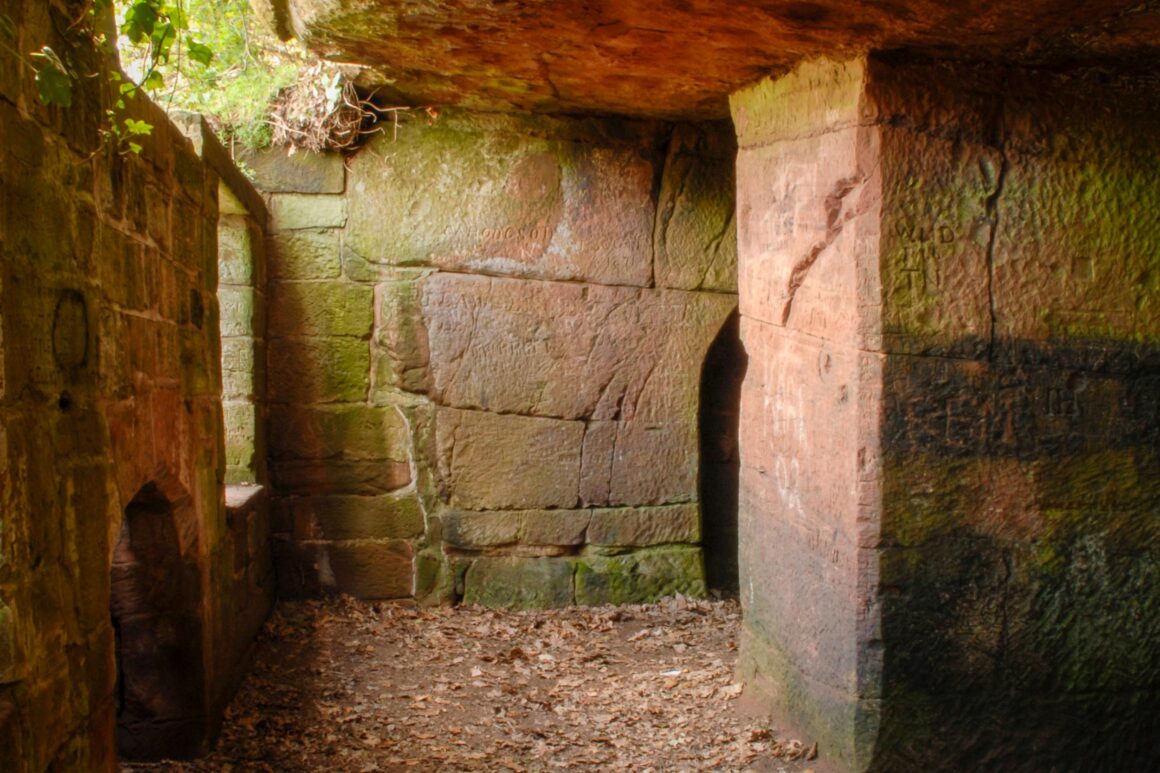Sandstone caves near Wetheral
Shrouded in legend and carved into the sandstone cliffs above the River Eden, the Wetheral Cells whisper stories from a time long forgotten.
Though any direct link to St. Constantine has been lost in the mists of time, Roman inscriptions in the vicinity hint at a much older past—perhaps even predating the Roman occupation itself. It’s believed that the Romans quarried stone from these very cliffs to build Hadrian’s Wall, leaving behind traces of their presence.





